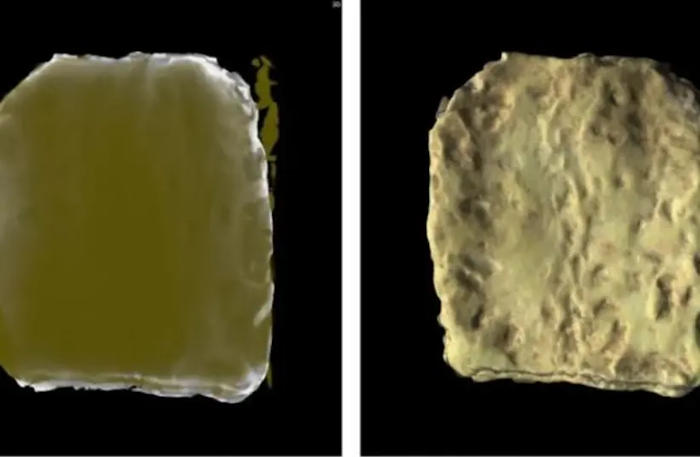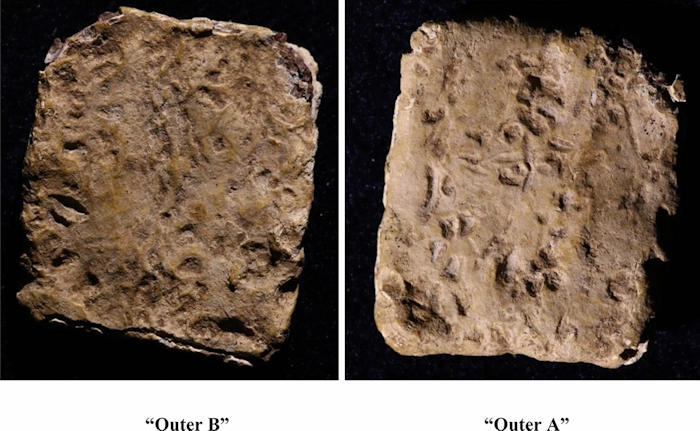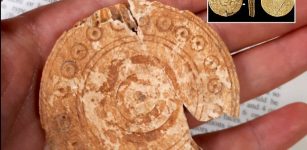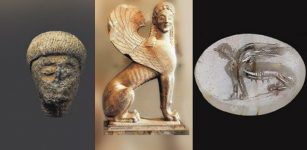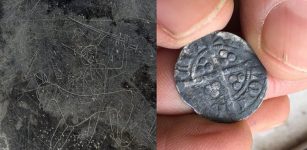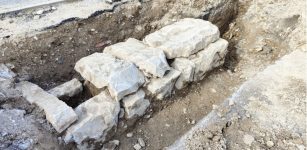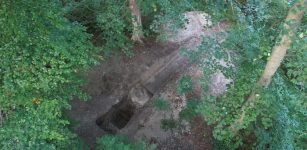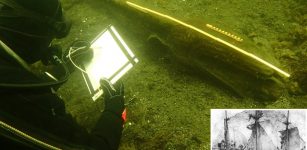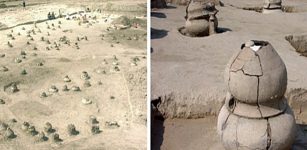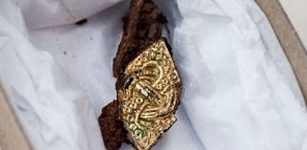X-Ray Images Reveal Hidden Text On Ancient ‘Cursed’ Mount Ebal Tablet
Conny Waters - AncientPages.com - About 40 years ago, an ancient tablet was found on Mount Ebal, close to the city of Nablus and roughly 50 kilometers north of Jerusalem, Israel.
Little was known about the tablet then, but the artifact has now undergone x-ray tomographic measurements, and scientists discovered something surprising.
XCT reconstruction of the tablet. Optical reconstruction by digital photogrammetry. Credit: Daniel Vavrik, Jaroslav Valach
In a study published in the journal Heritage Science, the science team explains that"epigraphic analysis of the tomographic data revealed a formulaic curse written in a proto-alphabetic script likely dating to Late Bronze Age II. The inscription falls within the literary genre of Chiastic Parallelism and predates any previously known Hebrew inscription in Israel by at least 200 years."
The inscription says, “You are cursed by the God YHW.”
"From 1982 to 1989, Adam Zertal excavated what he interpreted as two altars at el-Burnat (A) on Mt. Ebal’s second step on the eastern side. The smaller Late Bronze Age II altar lay directly beneath the larger Iron Age I altar. The biblical tradition (Joshua 8:30) records that Joshua, Israel’s early leader, built an altar on Mt. Ebal as part of a covenant renewal ceremony soon after the Israelites returned from Egypt to Canaan. Thus, it is possible that Zertal’s findings relate to this verse. The folded lead defixio, the subject of this paper, probably derived from the fill of the altars," the scientists write in their study.
Curse tablets were very popular among ancient people. "Ancient priests mass produced curse tablets, as evidenced by recovered tablets with blanks where names and other specific information could be added. People deposited the defixiones in perceived portals to the supernatural realm, such as graves, wells, and altar." 1
Scientists have found archaeological evidence "imprecatory texts as early as Egypt’s Middle Kingdom ensured that the administration of social justice would be adjudicated in the spirit world, even if earthly magistrates failed to punish adversaries." 1
The belief in the power of curses spread to neighboring empires. For over 700 years, ancient Romans bought a variety of defixiones – curse tablets to cast evil spells on anyone and anything. "The defixiones, curse tablets, were made of lead or lead alloys. It was a material that would endure harsh climatic elements and survive longer. It was less costly than the papyrus and wax alternatives. Sometimes limestone, ceramics, and even semi-precious stones were used to convey the desired ancient messages.
Object structure. Credit: Jaroslav Valach
According to Pliny, the Elder (23 AD - 79 AD), a Roman scholar, Gaius Plinius Secundus, knew ancient Romans deeply feared curses.
Archaeologists have unearthed more than 1500 ancient curse tablets. Most of them were found in Italy, often near Rome. Several curse tablets have also been unearthed in Roman Britain. People bought curse tablets from "professional" magicians, who had ready curse tables in their stocks. All the customer had to do was state the victim's name. This name was quickly inscribed on the defixiones.
The curse tablets conveyed messages to influential gods and spirits, usually asking them for victory over an enemy by binding them up in terrible trouble." 2
The small, folded ancient lead tablet found by Zertal has long been of interest but it was previously impossible to open it without damaging it. The Czech Republic’s lab of X-ray tomography performed several reconstructions of the tablet, revealing that writing exists on the tablet’s exterior and interior.
Scientists think the ancient curse tablet almost certainly came from one of the altars, and "was purposely left at the site, and if so, this would certainly be significant. It may have originally been utilized near the altar during a curse ceremony (cf. Deut 27 and Josh 8) and later deposited on the altar by priests.
Object structure. Drawings by Gershon Galil
The observation that the tablet possibly mentions the term ’arur 12 times (like Deut 27) may suggest that the object could indeed have been related to a curse ceremony as mentioned in Deut 27. The possibility also exists that the tablet reflects a verdict against an individual sinner under a divine curse (see Deut. 21:22–23).
See also: More Archaeology News
The pilgrims that frequented the site would not have touched the tablet, let alone taken it with them, as they considered the object to be sacred. Like the Ark of the covenant, ritual relics (mana) were often considered too holy to touch (2 Sam 6:6–7) or even view (1 Sam 6:19). Of course, it could also have been simply buried in the ground or deposited within the altar temenos with other cultic objects as a kind of favissa, a practice which occurred at other sites, including Iron Age Yavneh [68, 69], near the coast, and Horvat Qitmit in the northern Negev Desert. Excavation there yielded ritual objects, once part of the inventory of the local shrine." 1
According to Professor Gershon Galil, a researcher at in Jewish history and biblical studies at the University of Haifa all 48 letters are clear on the scans and the inscription dates to the end of the 13th century B.C. However, some experts have suggested the inscription could be even older, making this exceptional archaeological object worthy of further studies.
Written by Conny Waters - AncientPages.com Staff Writer
- Stripling, S., Galil, G., Kumpova, I. et al. “You are Cursed by the God YHW:” an early Hebrew inscription from Mt. Ebal. Herit Sci 11, 105 (2023). https://doi.org/10.1186/s40494-023-00920-9
- Ellen Lloyd - Defixiones: Ancient Roman Curse Tablets Became Big Business, AncientPages.com

